It has been over a year since I was last required for a recording by my friend and great musician Joseph Nolan. Over a number of years I have been privileged to help him with his Widor recordings at Saint Sulpice, Saint Sernin and Saint Ouen to name but a few.
That series is now completed and the inevitable question of what to do next and where to do it has been challenging our joint thoughts. As Joseph now lives in Perth Australia the trip to Europe is not a jaunt undertaken lightly so music and organ have to be very well selected.
St Bavo Kerk Haarlem
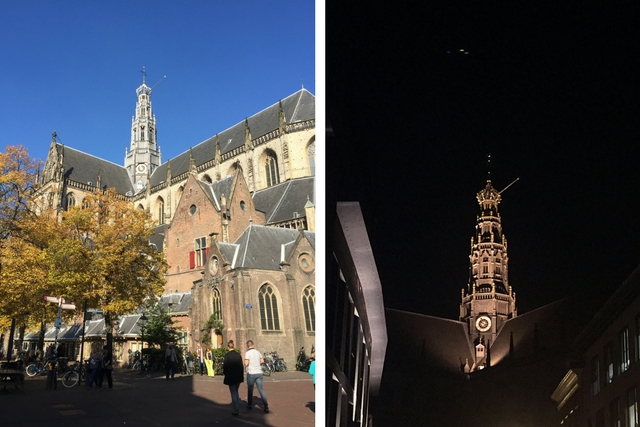
This is the first ‘Baroque’ instrument that we have used. The image of this instrument will be familiar to many readers. It is one of the iconic organ cases and it screams ‘Baroque’ at you from the moment you set eyes on it. Interestingly the individual voices do not so strongly reflect the sound that one expects from an instrument whose core pipework dates from 1738.
From the outset this trip was a delight. Organist Anton Pauw could not have been more welcoming and we were immediately handed the keys to this great building and its organ and more or less left to get on with it.
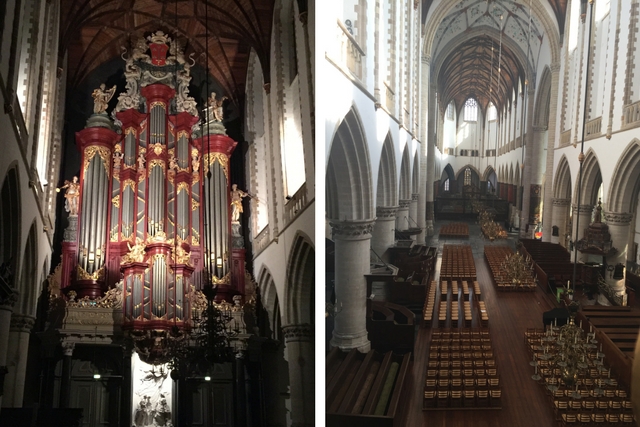
As you will see this organ is pretty much unchanged from its building almost 300 years ago. Huge draw knobs on square shafts and not a playing aid in sight. Registrants needed on both sides of the console to have any hope of a quick registration change.
A well devised system has developed to lay out the desired stop changes. All stops are numbered 1 to 8 at each of the 4 levels of the jamb. You just need write the number and indicate the level to show the registrant what to do. If the number is in a circle pull the stop out and if it is not push the stop in. Sounds simple doesn’t it. Simple it was not under the pressure of performance but happily we got through the two sessions in double quick time with minimal retakes.
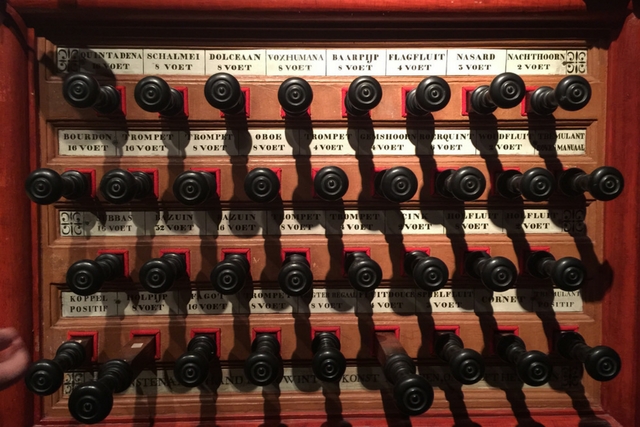
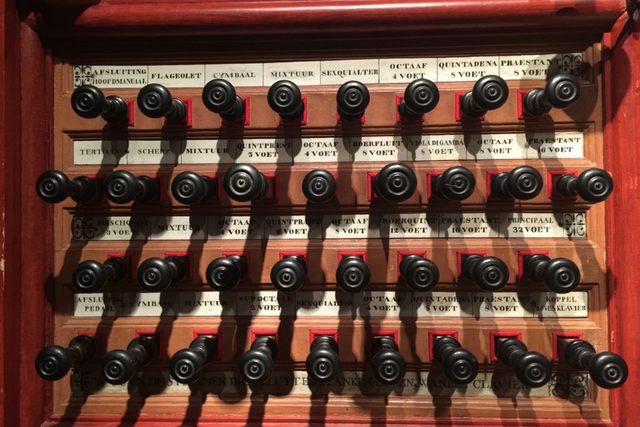
Playing and Recording the Music
Some Bach was chosen which required no stop changes, Mendelsohn’s sonata no 6 was also relatively light on the assistants work as was the Messere arrangement of the Bach Chaconne. Joseph however is always up for a challenge and Reubke’s Sonata on the 94th psalm did not disappoint when it came to be recorded.
Actually, the Reubke and Messere added a further challenge as the keyboard compass to just G was short of a few much needed notes but that was Joseph’s problem alone. This will be the first ever recording of the Reubke Sonata at St Bavo and it is not difficult to understand why other musicians have perhaps shied away from all the peripheral challenges of pulling it off on this particular instrument. Not also helped by the absence of a Swell to Positive coupler which required placing some sections of the music on a different manual from that usually used.
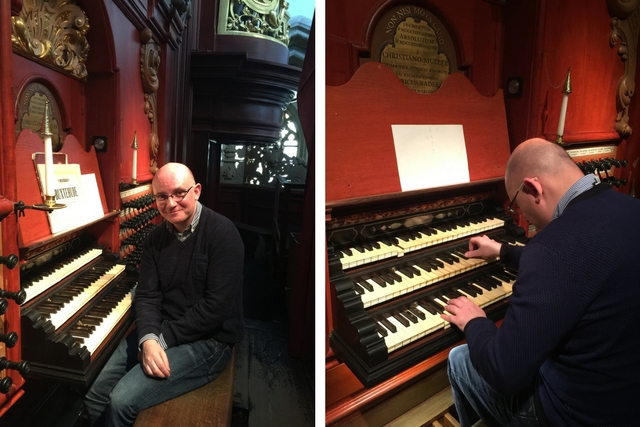
Sensational organ sound at great heights
I mentioned above that the Muller organ was not quite the typical baroque sound I had anticipated. Unusually the flutes were quite mellow and almost totally devoid of any chiff. The Prestants too were also very smooth and in the loft did not seem to have the power expected from such a huge instrument. Loft impressions though can be very misleading, shielded as we were by the huge positive case behind us that of course dominated what we heard. To assist there is an audio system fed by microphones in the nave. This is listened to on head phones so you get a better impression of what the instrument sounds like in the church.
We also had the benefit of the sound from the 30 meter tall boom mikes used for the recording. It has to be said that the full organ is a sensational sound at that height. The 32 foot Prestant underpins the instrument massively and sets a great foundation to the mixture work that is typically bright as you would expect of this instruments pedigree.
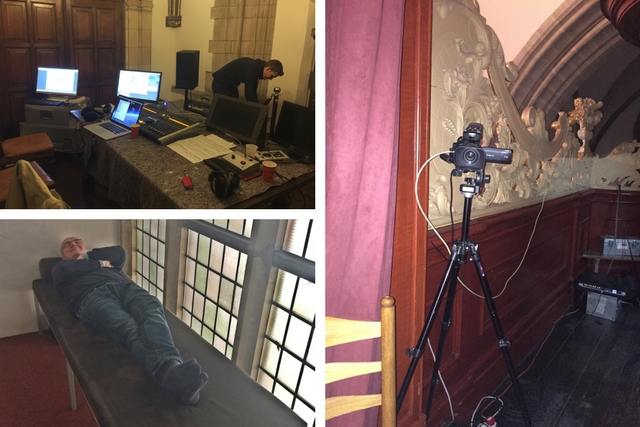
Haarlem well worthy of a visit
Haarlem too is a delightful backwater. The church sits in a lovely period square and is almost completely circled by cafes and restaurants that provide a great place to watch the world pass you by as it does but almost totally on bicycles. This is one of the great city break venues. Give it a try regardless of if you are an organ fan or not. You will not be disappointed.
So where to next and what to record? We would really like to have your suggestions.
I have had a passion for church organs since the tender age of 12. I own and run Viscount Organs with a close attention to the detail that musicians appreciate; and a clear understanding of the benefits of digital technology and keeping to the traditional and emotional elements of organ playing.
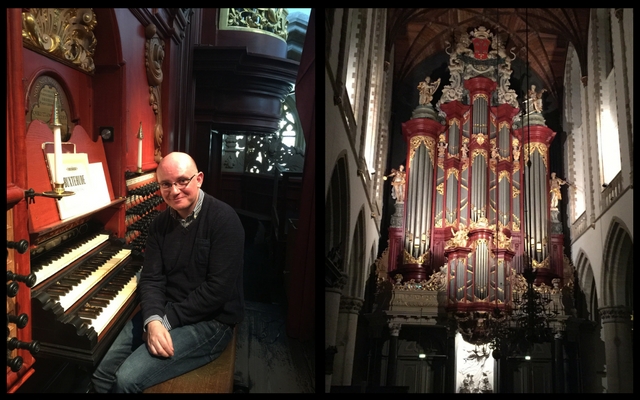



You should try the Domkirk in Dordrecht. It has a huge reverb